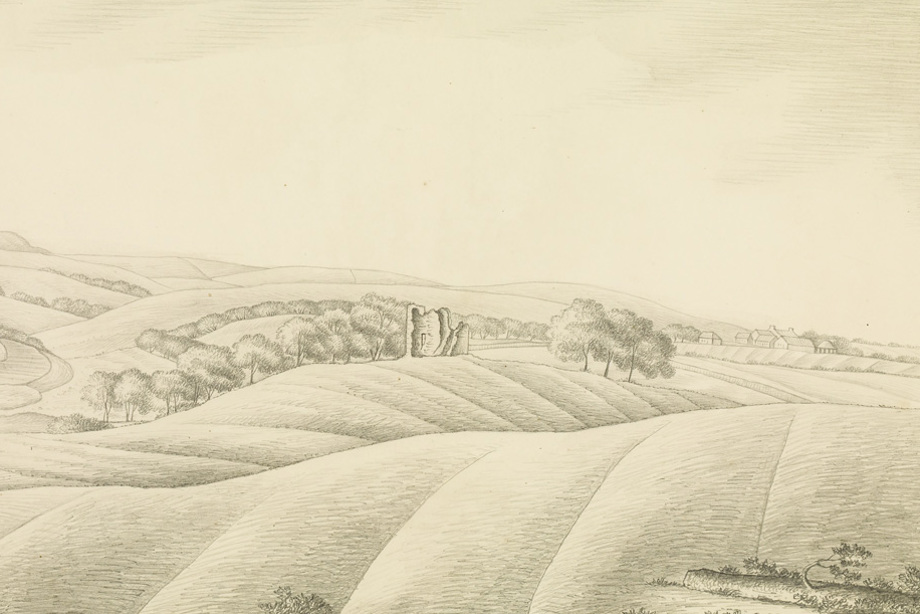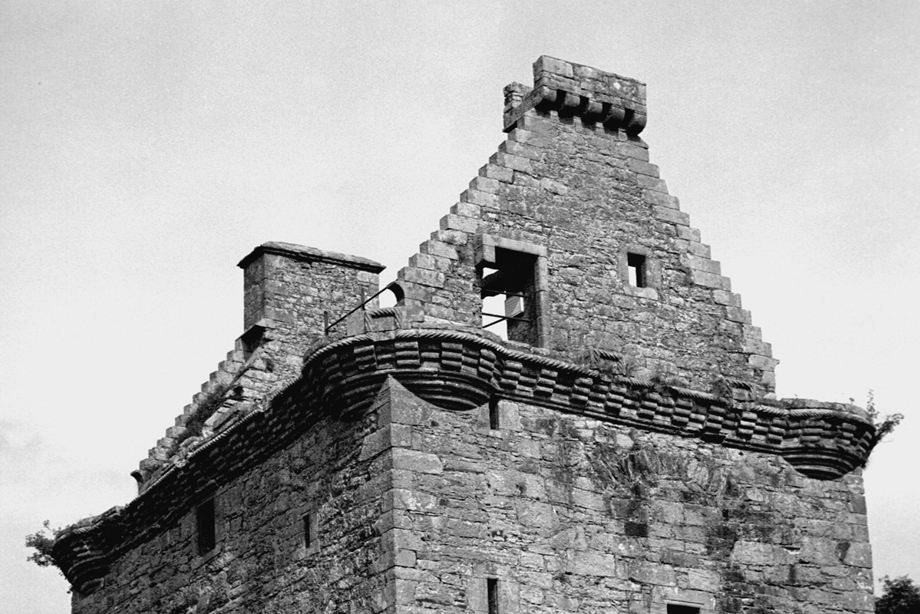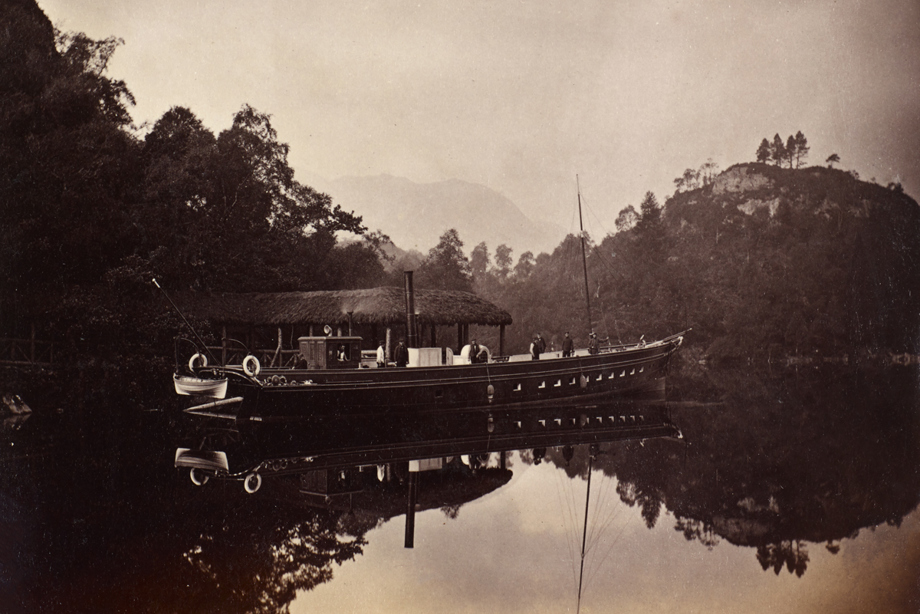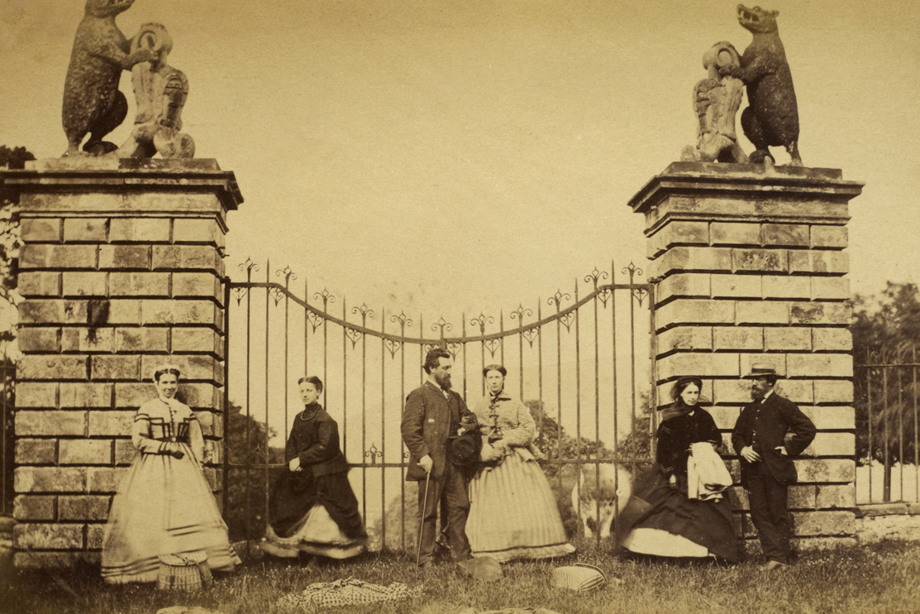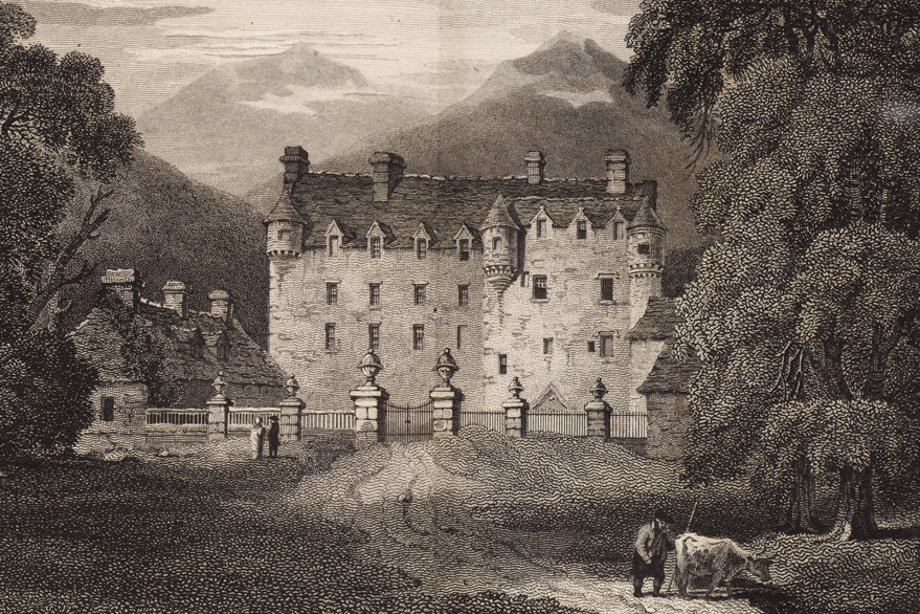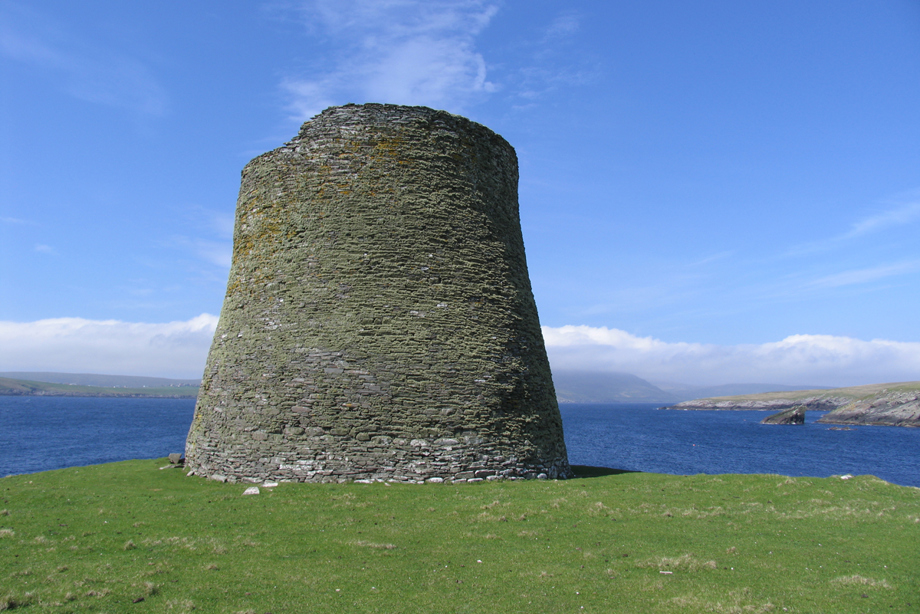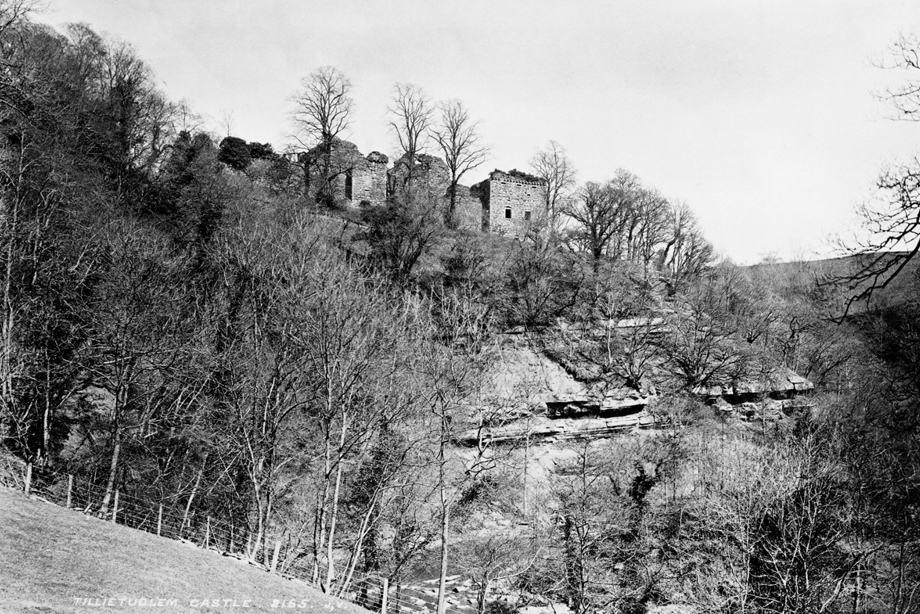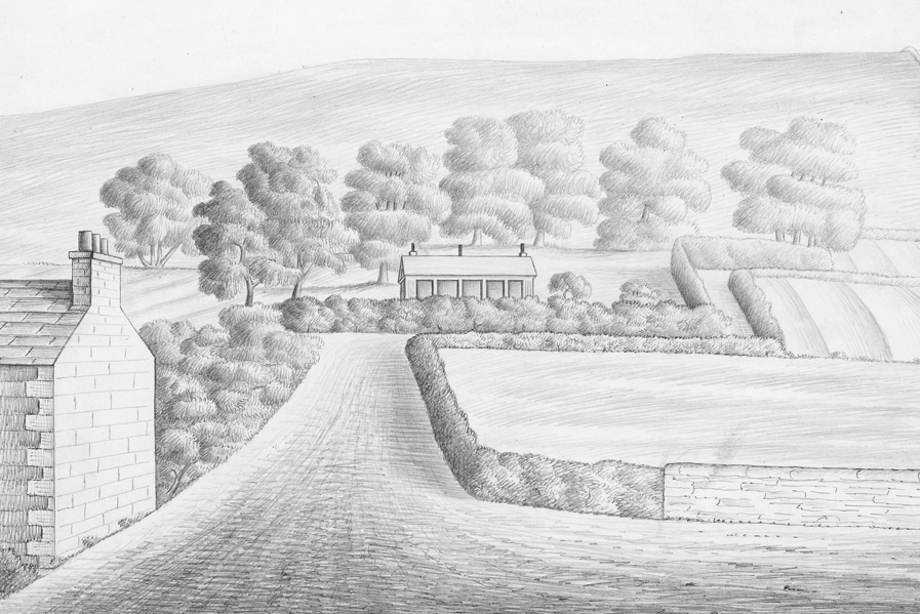In his poems, novels and non-fiction works, Sir Walter Scott described historic buildings all over Scotland, from the Scottish Borders to Shetland.
Some of these places – such as the Old Tolbooth in Edinburgh from ‘The Heart of Midlothian’ – were existing sites written about by Scott.
In other works Scott used real locations but created new place names for them. There are even real places in Scotland – such as Jarlshof – that received their current name from Scott.
Old Thirlestane Castle, Scottish Borders
'Minstrelsy of the Scottish Border' (1802) was Scott’s first major contribution to literature and antiquarianism.
It comprised ballads and songs collected by Scott from the Scottish Borders, with his own introductions and footnotes proving an historical context.
As many of the pieces relate to Border warfare and the activities of the Reiver families, numerous castles and towns in the south of Scotland and the north of England are referenced. These sites include Old Thirlestane Castle, which was defended by Auld Maitland against Edward I in the ballad 'Auld Maitland' (1802).
Of Scotland's king I haud my house; He pays me meat and fee; And I will keep my gude auld house; While my house will keep me.
Gilnockie Tower, Dumfries and Galloway
This photograph shows Gilnockie Tower, also known as Hollows Tower; this was the base of Johnnie Armstrong, a 16th-century Border Reiver who was the hero of 'Johnie Armstrang'.
In his introduction to the ballad, Scott wrote ‘its ruins still serve to adorn a scene, which, in natural beauty, has few equals in Scotland.’
One burnished sheet of living gold, Loch Katrine lay beneath him rolled.
Loch Katrine
Scott’s epic poem, 'The Lady of the Lake' (1810), featured the loch prominently.
The popularity of Scott's work ensured that Loch Katrine would be a destination for tourists from the 19th century onwards.
The paddle steamer pictured in this 1880s photograph is the 'Rob Roy', named after another well-known work by Scott.
The successor to the 'Rob Roy', the 'Sir Walter Scott', continues to carry tourists on Loch Katrine today.
...The scenery of Loch-Katrine was, comparatively speaking, but little known, notwithstanding its magnificence, till the publication of ' The Lady of the Lake;' but the splendid descriptions of that fine poem soon spread its fame as far as the English language is understood, and it is now visited by almost every stranger who makes the tour of Scotland...
Traquair House, Innerleithen, Scottish Borders
'Waverley' (1814) was Scott’s first published novel, and is probably his most famous one.
It is also one of Scott’s most autobiographical works: the hero of the story is sent out of the city as a child for health reasons, has an interrupted education, but gains a love of history and tales of chivalry.
One of the key locations in 'Waverley' is the castle of Tully Veolan, the home of the Baron Bradwardine and his daughter, Rose. It is where Edward Waverley is first introduced to the people and customs of Scotland before embarking on his first adventures.
Tully Veolan is a fictional location, though there are a number of possible real locations that Scott may have had in mind.
One of the most obvious inspirations is Traquair House in Innerleithen. This estate is home to a set of gates topped with statues of bears, a central courtyard, and a house with slit windows and turrets, all features shared by Tully Veolan.
...It had been built at a period when castles were no longer necessary, and when the Scottish architects had not yet acquired the art of designing a domestic residence. The windows were numberless, but very small; the roof had some nondescript kind of projections, called bartizans, and displayed at each frequent angle a small turret, rather resembling a pepper-box...
Mousa Broch, Shetland
In 1814, Scott accompanied the lighthouse builder and engineer Robert Stevenson (grandfather of writer Robert Louis Stevenson) on a voyage round the coast of Scotland.
The purpose of the journey was to inspect lighthouses on behalf of the Northern Lighthouse Board. It also meant that Scott could visit places like Orkney, Shetland, and the Hebrides.
Scott used his notes from this six week tour when writing 'The Pirate' (1821), a novel which is set on and between Shetland and Orkney.
Mousa Broch in Shetland is one of the best preserved brochs in Scotland. It also featured in 'The Pirate' as the home of the prophetess Norn. In a footnote Scott wrote that "the tower of Mousa rather resembles the figure of a dice-box".
The ruined house of Jarlshof on Shetland, was described by Scott as "in appearance a most dreary mansion". Jarlshof was a key setting in 'The Pirate', and it even received its current name – meaning Earl’s Mansion – from Scott, who was an enthusiastic antiquarian.
Craignethan Castle, South Lanarkshire
'Old Mortality' (1816) is set in the 17th century, and much of the action revolves around the fictional castle of Tillietudlem.
It was believed by some readers to be Craignethan Castle, due to the similarity in geography. In a footnote to a later edition of 'Old Mortality', Scott confirmed this similarity.
Whether intended or not, Craignethan Castle became part of the Scott tourist trail, even to the extent that a (now closed) railway station near the castle was named Tillietudlem.
The photograph shown here from 1881 names the castle Tillietudlem rather than Craignethan.
The Castle of Tillietudlem is imaginary; but the ruins of Craignethan Castle, situated on the Nethan, about three miles from its junction with the Clyde, have something of the character of the description in the text.
St Ronan's Well, Innerleithen, Scottish Borders
Scott became famous as a writer for his historical novels. He did, however, write one novel that was set in the 19th century, 'St Ronan’s Well' (1823).
Set in a fictional location, the spring at Innerleithen became known as St Ronan’s Well after the book’s publication and led to an increase in the number of visitors coming to take the water.
As a result of his poor health as a child, Scott had visited a number of different spas, including the well at Innerleithen.
Previously the spring had been known as the Dow-Well, due to its popularity with local 'doos' (pigeons). The first pump room at the well was built in 1827; this drawing shows it from 1836. The pavilion as it stands currently was built in the 1890s.
St Ronan’s Well was different to Scott’s previous works. It dealt with the social interactions of recognisable contemporary types, rather than the chivalric adventures of his historical novels. Scott himself was aware that this style was not his forte.
The women do this better: Edgeworth, Ferrier, Austen have all had their portraits of real society, far superior to anything man, vain man, has produced of the like nature.
Sir Walter Scott - Celebrating 250 Years
In 2021-22, Scotland celebrates the 250th anniversary of one of its most famous sons, Sir Walter Scott. This online exhibition and audio trail of his legacies is part of the celebrations.

